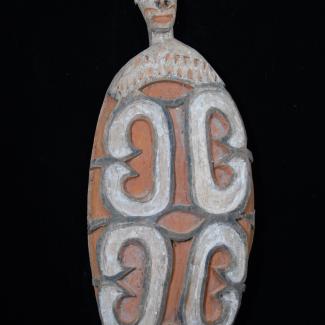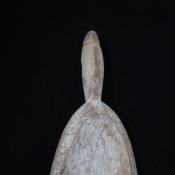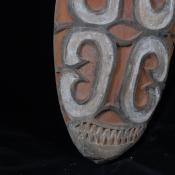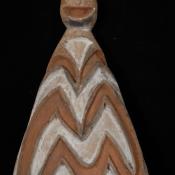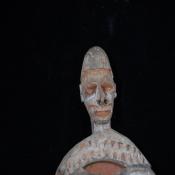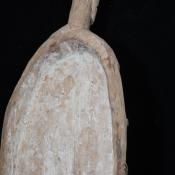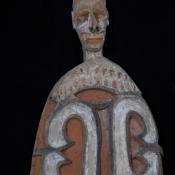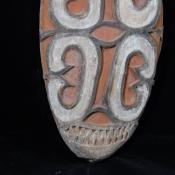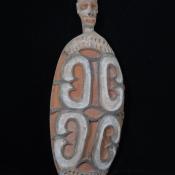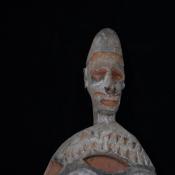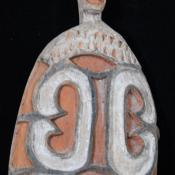This is an oblong wooden sago dish of the Asmat peoples of Papua New Guinea. The curved surface of the piece features a complex geometric design of white swirls set against a red background. This distinguishes it from other similar pieces, as swirls are often painted in red. At either end of the piece are bands of triangular indentations resembling teeth. The handle of the piece is carved in the image of a man’s face, with a large nose, receding brow, sunken eyes, and small mouth. On each cheek is a horizontal scar which is painted red. At the top of the face is a carved portion painted black, which can be interpreted as hair or a headpiece. Much of the paint around the face has since faded, leaving only remnants of the red pigment. There are long cracks along the left side of the piece, running 5”.
Sago dishes such as this were an important part of everyday life in Asmat culture, as they were used to eat the sago food during meals. Sago was taken from the sago tree, which itself is a core part of Asmat spiritual belief and practical economy. Platters such as this are designed to respect the role that the sago plays and the handle is carved in the likeness of a human to emphasize the interconnectedness of humans with ideas such as fertility and life. Platters such as this were also used in the consumption of human brains which were the results of headhunting rituals. This was replaced in the late twentieth century by consumption of the Capricorn beetle, whose larvae strongly resemble human brains. It is believed this was a change initiated when missionaries began banning the practice of headhunting in the region.
White pigments are called mbi, and are made by crushing and mixing the ashes of mussel shells taken from the riverbanks. Red pigments are called wasah and are made through a mixture of red clay and muds taken from rivers and riverhead villages. Color has a magical quality in much of Asmat thought. The myth of the featureless man Ofomin relates this, as it is held that it was his blood that created the red clay after he was murdered by his wife and her jealous lover.
Colors: White, Red, Black, Brown

